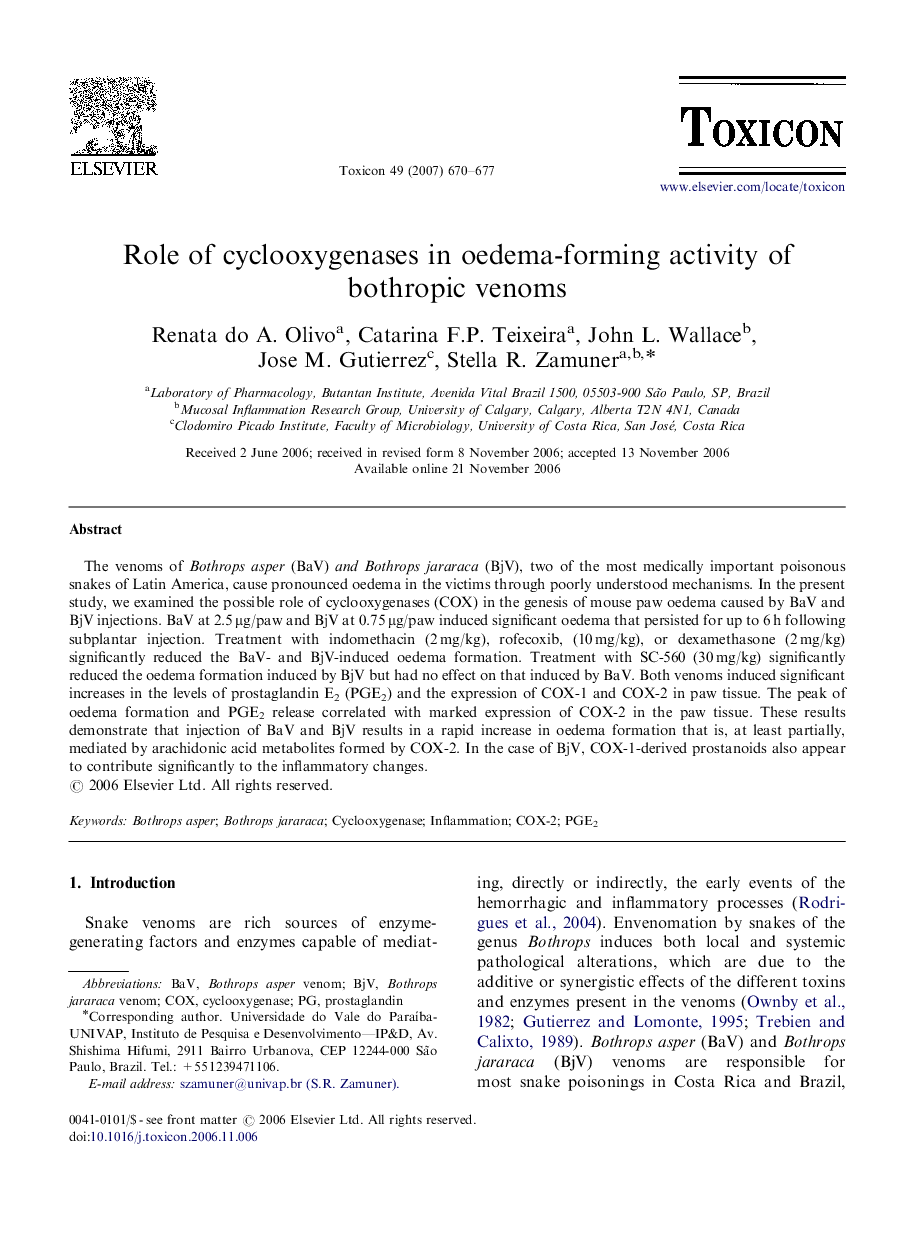| Article ID | Journal | Published Year | Pages | File Type |
|---|---|---|---|---|
| 2066121 | Toxicon | 2007 | 8 Pages |
The venoms of Bothrops asper (BaV) and Bothrops jararaca (BjV), two of the most medically important poisonous snakes of Latin America, cause pronounced oedema in the victims through poorly understood mechanisms. In the present study, we examined the possible role of cyclooxygenases (COX) in the genesis of mouse paw oedema caused by BaV and BjV injections. BaV at 2.5 μg/paw and BjV at 0.75 μg/paw induced significant oedema that persisted for up to 6 h following subplantar injection. Treatment with indomethacin (2 mg/kg), rofecoxib, (10 mg/kg), or dexamethasone (2 mg/kg) significantly reduced the BaV- and BjV-induced oedema formation. Treatment with SC-560 (30 mg/kg) significantly reduced the oedema formation induced by BjV but had no effect on that induced by BaV. Both venoms induced significant increases in the levels of prostaglandin E2 (PGE2) and the expression of COX-1 and COX-2 in paw tissue. The peak of oedema formation and PGE2 release correlated with marked expression of COX-2 in the paw tissue. These results demonstrate that injection of BaV and BjV results in a rapid increase in oedema formation that is, at least partially, mediated by arachidonic acid metabolites formed by COX-2. In the case of BjV, COX-1-derived prostanoids also appear to contribute significantly to the inflammatory changes.
